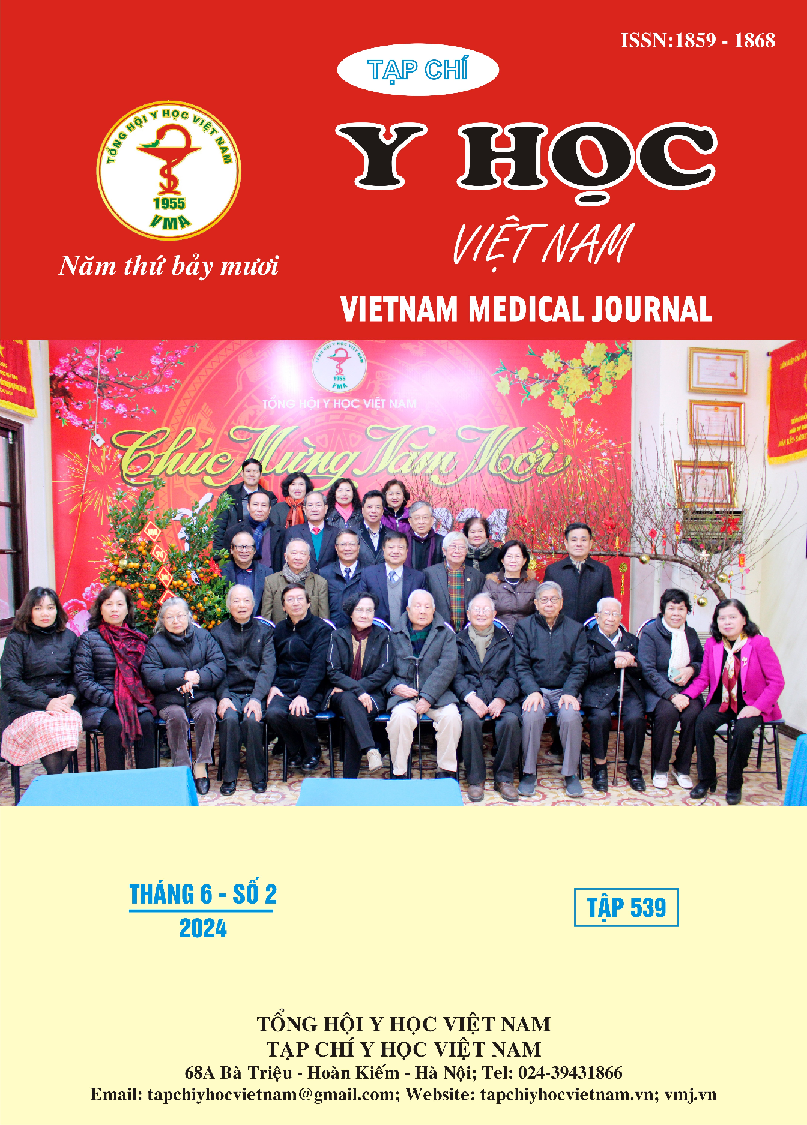INVESTIGATIONS OF ACETYLCHOLINESTERASE INHIBITORY ACTIVITY OF SEVERAL FERNS AND TRADITIONAL MEDICINE FORMULAS
Main Article Content
Abstract
Objective: Alzheimer’s disease (AD) is a degenerative neurological disease that is common in the elderly. The acetylcholinesterase (AChE) inhibitors, which help maintain acetylcholine content in synaptic clefts, are the first choice in treating AD’s symptoms. Herbs and traditional medicine formulas (TMF) have shown the potential in inhibiting AChE in vitro. This study aimed to screen the AChE inhibitory activity in vitro of some ferns and TMF. Materials and Methods: In this study, we screened the AChE inhibitory effect in vitro of 5 ferns and 6 TMF. The herbs were extracted with ethanol 70% whereas TMF were decocted with clean water. Subsequently, AChE inhibitory effect was screened using the Ellman’s colorimetric method. Results: The extracts of Acrostichum aureum L., Ceratopteris thalictroides (L.) Brongn, Quy Ty Thang, and Bao Hoa Hoan Gia Giam exhibited the highest AChE inhibitory effect, with IC50 values of 60.8 ± 0.49 μg/mL, 132.6 ± 0.45 μg/mL, 263.8 ± 14 μg/mL, and 124.2 ± 12.9 μg/mL, respectively. Conclusion: The study suggests potential AChE inhibition, opening the foundation for exploring and applying medicinal herbs, especially fern species and TMF in AD treatment.
Article Details
Keywords
AChE inhibition, in vitro, Ellman, ferns, traditional medicine formulas
References
2. Cao, Hui et al. Phytochemicals from fern species: potential for medicine applications. Phytochem Rev. 2017;16:379-440.
3. Wang Y, Lai Z, Li XX, et al. Isolation, diversity and acetylcholinesterase inhibitory activity of the culturable endophytic fungi harboured in Huperzia serrata from Jinggang Mountain, China. World J Microbiol Biotechnol. 2016;32(2). doi:10.1007/ S11274-015-1966-3
4. Kim Thu D, Vui DT, Ngoc Huyen NT, Duyen DK, Thanh Tung B. The use of Huperzia species for the treatment of Alzheimer’s disease. J Basic Clin Physiol Pharmacol. 2020;31(3). doi:10.1515/J BCPP-2019-0159/HTML
5. Ellman GL, Courtney KD, Andres V, Featherstone RM. A new and rapid colorimetric determination of acetylcholinesterase activity. Biochem Pharmacol. 1961;7(2). doi: 10.1016/ 0006-2952(61)90145-9
6. Xiao L, Liao F, Fan Y MN. Ren Shen Yang Rong Tang and other traditional Chinese medicines exhibit antioxidant and anti-inflammatory capacities and suppress acetylcholinesterase activity in PC12 neuronal cells. Longhua Chin Med. 2021;4:13. doi:10.21037/lcm-21-12
7. Chear, N. J. Y., Khaw, K. Y., Murugaiyah, V., & Lai CS. Cholinesterase inhibitory activity and chemical constituents of Stenochlaena palustris fronds at two different stages of maturity. J food drug Anal. 2016;24(2):358-366.
8. Thi Thu Hoai N et al. Comparing acetylcholinesterase and butyrylcholinesterase inhibition effect of total extract and fractions with alcaloid-rich extract of Huperzia errata (Thunb.) Trevis. VNU J Sci Med Pharm Sci. 2020;36(1):55-64.
9. Tung BT, Thu DK, Thu NTK, Hai NT. Antioxidant and acetylcholinesterase inhibitory activities of ginger root (Zingiber officinale Roscoe) extract. J Complement Integr Med. 2017;14(4). doi:10.1515/JCIM-2016-0116/HTML
10. Lo TY, Chan ASL, Cheung ST, Yung LY, Leung MMH WY. Multi-target regulatory mechanism of Yang Xin Tang - a traditional Chinese medicine against dementia. Chin Med. 2023;18(1):101.


